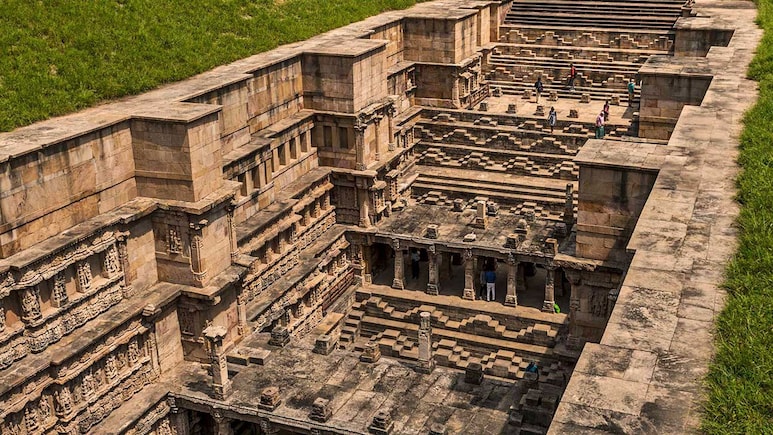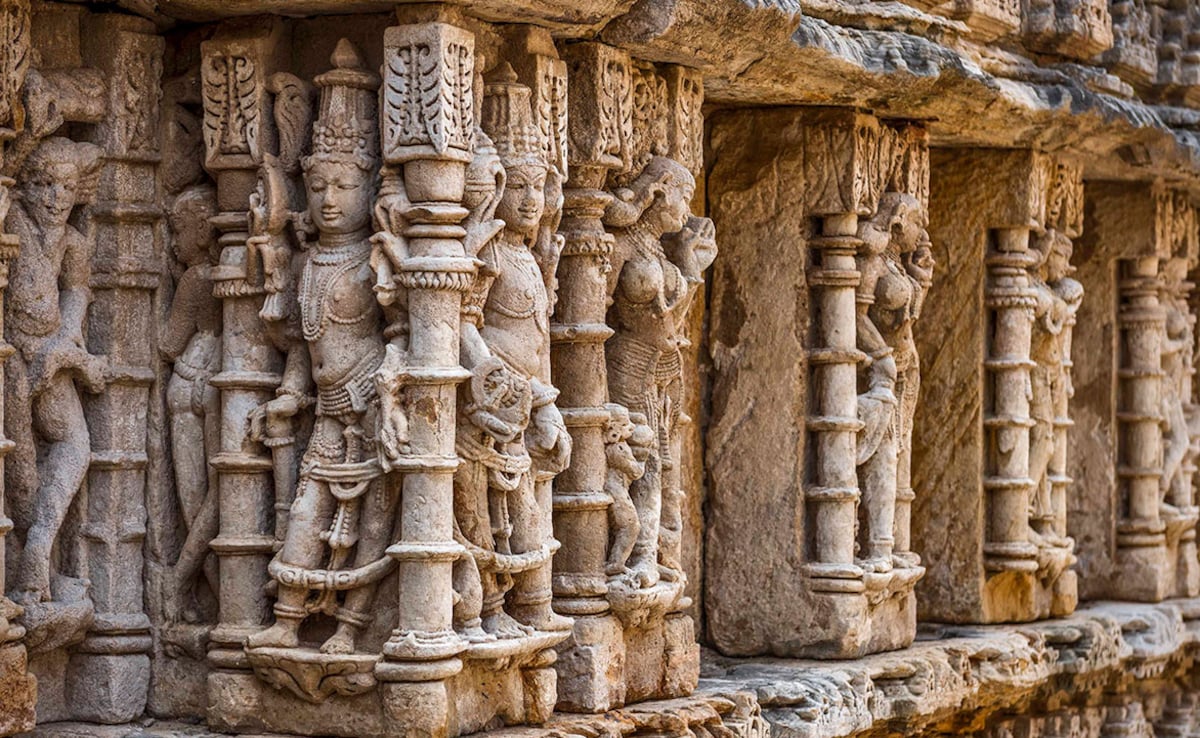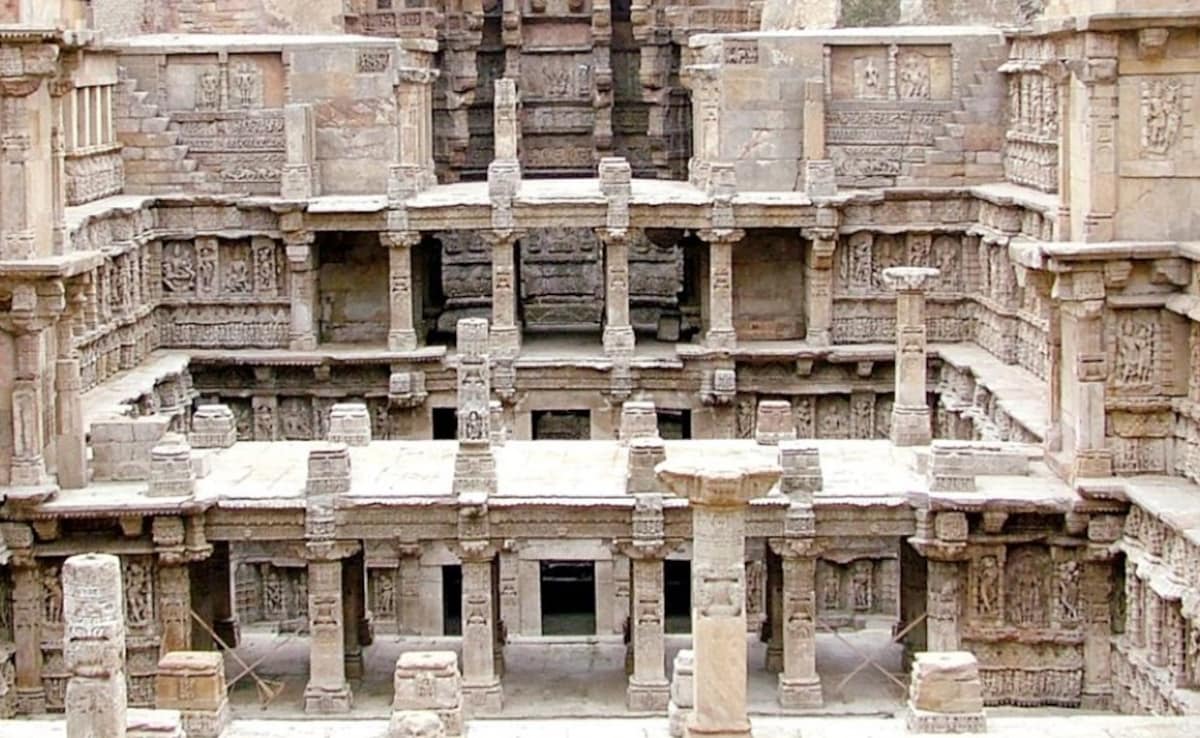
Imagine a monument that does not rise into the sky but sinks into the earth. Every step downward takes you deeper into history, mythology, and architectural brilliance. This is Rani-Ki-Vav, the Queen's Stepwell in Patan, Gujarat - a UNESCO World Heritage Site that combines art, engineering, and spiritual significance. Built in the 11th century by a grieving queen in memory of her king, this stepwell is not just a water reservoir. It is a subterranean temple, a sculptural gallery, and a symbol of India's ancient water wisdom. With over 1,500 intricate carvings, a tunnel of legends, and a design that mirrors the cosmos, Rani-Ki-Vav is one of India's most underrated architectural wonders.
The Queen Who Built A Stepwell:
Rani-Ki-Vav's story begins with Queen Udayamati, wife of King Bhimdev I of the Solanki dynasty. After the king's untimely death, she commissioned the stepwell around 1063 CE as a tribute to him.
Water was sacred in ancient India. Stepwells were practical, yes, but also places of worship, meditation, and community gathering. Rani-Ki-Vav was all of this at once - a temple built downwards instead of upwards, guiding visitors from the earthly to the divine.
Over centuries, floods from the Saraswati River buried it under silt. Rediscovered in the 1940s and restored by the Archaeological Survey of India in the 1980s, it became a UNESCO World Heritage Site in 2014.
Why Everyone Talks About This Stepwell?
Rani-Ki-Vav is a perfect mix of design, story, and social space. Here is why it stands out:
1. A Temple That Goes Down, Not Up
The seven-level descent is symbolic of a spiritual journey. Natural light enters at certain hours, illuminating sculptures and creating a sacred atmosphere.
2. Gujarat's Architectural Marvel
Built in Maru-Gurjara style, it stretches 64 metres long, 20 metres wide, and plunges 27 metres deep. Pillared pavilions, stepped corridors, and a rectangular tank manage water flow and create visual harmony.
3. 1,500 Sculptures You Have To See
The walls are a living museum of Hindu mythology. Key highlights:
- Vishnu reclining on Sheshnag
- Avatars like Matsya, Varaha, Narasimha, Krishna, and Kalki
- Graceful apsaras and nagakanyas with intricate jewellery and expressive poses
4. Where History Meets Community
Stepwells were social hubs. Rani-Ki-Vav offered relief during scorching summers, space for rituals, and water believed to have medicinal properties due to surrounding herbs.
5. Secrets Buried Under Stone
Legends say a secret tunnel connected the stepwell to nearby Sidhpur. It was likely used as an escape route during invasions.
6. Yes, It Is On Rs. 100 Notes
This stepwell appears on the back of India's Rs. 100 note, symbolising national pride. In 2016, it was also awarded India's Cleanest Iconic Place.
7. Legends Carved In Every Step
Each level tells a story. Sculptures depict gods, goddesses, and daily life from the 11th century. Vishnu's avatars convey cosmology, apsaras show grace and beauty, and carvings of villagers and rituals highlight the era's social customs. Every step immerses you in history, myth, and artistry.
What It Feels Like Inside?
Walking into Rani-Ki-Vav is a sensory experience. The air is cool, a relief in summer. Echoes bounce through the corridors, and sunlight casts dramatic patterns on the walls. Seven descending levels lead to the rectangular water tank at the bottom. Every corridor, pavilion, and sculpture invites reflection and awe.

Photo Credit: Gujarat Tourism
How To Get There And When?
- Where: Patan, Gujarat, about 125 kilometres from Ahmedabad, on the now-dry Saraswati River.
- Timing: Open daily 8:00 AM to 6:00 PM. Early morning or late afternoon offers soft light and fewer crowds. Best season: October to March.
- Entry: Rs. 40 for Indian citizens, Rs. 600 for foreign nationals, free for children under 15.
- By Air: Nearest airport - Sardar Vallabhbhai Patel International, Ahmedabad. 2.5-3 hour drive.
- By Train: Patan Railway Station is small; Mehsana Junction is better connected. Patan is 45 minutes by road from Mehsana.
- By Road: Well-connected via NH147 and SH41. Scenic drive from Ahmedabad takes 2.5 hours.
Other Gems Around Patan:
- Patan Patola Heritage Museum - famous for double ikat silk sarees
- Sahasralinga Talav - historic water tank with thousands of Shiva lingas
- Local bazaars - perfect for Patola sarees, handicrafts, and snacks
- Panchmukhi Hanuman Temple - nearby spiritual stop
How To Capture It Right?
- Shoot early morning or late afternoon for dramatic light
- Wide-angle lens captures full stepwell depth
- Respect space; avoid tripods in crowded areas
- Focus on sculptures and textures for storytelling shots

Photo Credit: PIB
Must-Know Hacks:
- Wear comfortable shoes for walking
- Carry water and sunscreen
- Hire a guide to understand sculptures
- Avoid peak summer afternoons for comfort
Why You Cannot Miss This Stepwell?
Rani-Ki-Vav is more than a monument; it is memory, mythology, and engineering carved in stone. A queen's love became a lasting legacy, water became worship, and every sculpture tells a story. Visiting is an educational and spiritual journey into India's heritage - and you literally hold it in your hands on Rs. 100 notes.
Track Latest News Live on NDTV.com and get news updates from India and around the world

